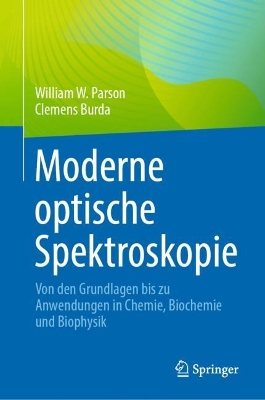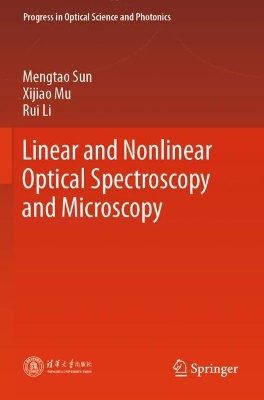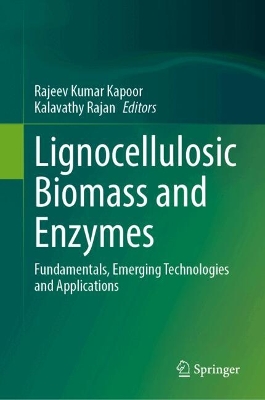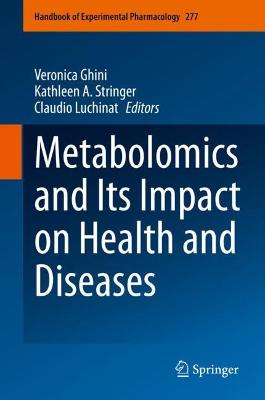Clinical Applications of Mass Spectrometry in Biomolecular Analysis
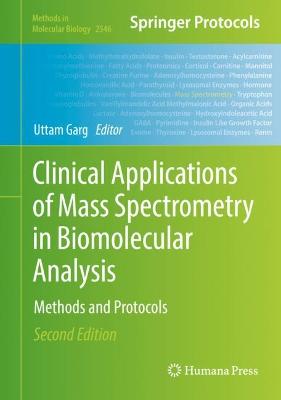 portes grátis
portes grátis
Clinical Applications of Mass Spectrometry in Biomolecular Analysis
Methods and Protocols
Garg, Uttam
Springer-Verlag New York Inc.
09/2022
547
Dura
Inglês
9781071625644
15 a 20 dias
1243
Descrição não disponível.
Introduction to Mass Spectrometry for Bimolecular Analysis in a Clinical Laboratory.- System Performance Monitoring in Clinical Liquid Chromatography-Tandem Mass Spectrometry (LC-MS/MS).- Tandem Mass Spectrometry for the Analysis of Plasma/Serum Acylcarnitines for the Diagnosis of Certain Organic Acidurias and Fatty Acid Oxidation Disorders.- Quantification of Plasma S-Adenosylmethionine and S-Adenosylhomocysteine Using Liquid Chromatography Electrospray Tandem Mass Spectrometry.- Quantitation of Aldosterone in Serum or Plasma Using Liquid Chromatography-Tandem Mass Spectrometry (LC-MS/MS).- Comprehensive Determination of Amino Acids for Diagnosis of Inborn Errors of Metabolism.- Quantification of Branched-Chain Amino Acids in Plasma by High-Performance Liquid Chromatography-Tandem Mass Spectrometry (LC- MS/MS).- Quantitation of Butyrylcarnitine, Isobutyrylcarnitine, and Glutarylcarnitine in Urine Using Ultra Performance Liquid Chromatography-Tandem Mass Spectrometry (UPLC-MS/MS).- Quantification of Free and Total Carnitine in Serum Using Liquid Chromatography Tandem Mass Spectrometry.- Sensitive and Robust LC-MS/MS Analysis of Salivary Cortisol in Negative Mode.- Measurement of Urine Free Cortisol and Cortisone by LC-MS/MS.- Laboratory Diagnosis of Cerebral Creatine Deficiency Syndromes by Determining Creatine and Guanidinoacetate in Plasma and Urine.- Quantitation of Estradiol and Testosterone in Serum Using LC-MS/MS.- Quantitation of Fatty Acids in Serum/Plasma and Red Blood Cells by Gas Chromatography-Negative Chemical Ionization-Mass Spectrometry.- Quantitation of ?-Aminobutyric Acid in Cerebrospinal Fluid Using Liquid Chromatography Electrospray Tandem Mass Spectrometry.- A Simple, Fast, and Reliable LC-MS/MS Method for the Measurement of Homovanillic Acid and Vanillylmandelic Acid in Urine Specimens.- Quantitation of Neuroblastoma Markers Homovanillic Acid (HVA) and Vanillylmandelic Acid (VMA) in Urine by Gas Chromatography-Mass Spectrometry (GC/MS).- Quantification of 5-Hydroxyindoleacetic Acid in Urine by Ultra Performance Liquid Chromatography Tandem Mass Spectrometry.- Quantitation of IgG Subclasses in Serum Using Liquid Chromatography-Tandem Mass Spectrometry (LC-MS/MS).- Quantification of Insulin Analogs by Liquid Chromatography-High Resolution Mass Spectrometry.- Differentiation of Common IGF-1 Variants Using HRAM-MS COM Determination with Follow-Up MS/MS Verification.- Monitoring and Identifying Insulin-Like Growth Factor 1 Variants by Liquid Chromatography-High Resolution Mass Spectrometry in a Clinical Laboratory.- Quantitation of Lactate in Cerebrospinal Fluid Using Liquid Chromatography-Electrospray Tandem Mass Spectrometry.- Multiplex Lysosomal Enzyme Activity Assay on Dried Blood Spots Using Tandem Mass Spectrometry.- Plasma Lysosphingolipid Biomarker Measurement by Liquid Chromatography-Tandem Mass Spectrometry.- Detection of 13C-Mannitol and Other Saccharides Using Tandem Mass Spectrometry for Evaluation ofIntestinal Permeability, or Leaky Gut.- LC-MS/MS Method for High Throughput Analysis of Methylmalonic Acid in Serum, Plasma, and Urine: Method for Analyzing Isomers without Chromatographic Separation.- Quantitation of 5-Methyltetrahydrofolate in Cerebrospinal Fluid Using Liquid Chromatography Electrospray Tandem Mass Spectrometry.- Screening of Organic Acidurias by Gas Chromatography Mass Spectrometry (GC-MS).- Identification of Urine Organic Acids for the Detection of Inborn Errors of Metabolism Using Urease and Gas Chromatography-Mass Spectrometry (GC/MS).- Quantitative Organic Acids in Urine by Two-Dimensional Gas Chromatography-Time-of-Flight Mass Spectrometry (GCxGC-TOFMS).- Quantification of Parathyroid Hormone and Its Fragments in Serum by Liquid Chromatography-High Resolution Mass Spectrometry.- High Sensitivity Measurement of Parathyroid Hormone Related Protein (PTHrP) in Plasma by LC-MS/MS.- Quantitation of Phenylalanine in Dried Blood Spot using Liquid Chromatography TandemMass Spectrometry for Monitoring of Patients with Phenylketonuria (PKU).- An Optimized Procedure for Proteomic Analysis of Extracellular Vesicles Using In-Stage Tip Digestion and DIA LC-MS/MS: Application to Liquid Biopsy in Cancer.- High-Throughput Plasma Proteomic Profiling.- Quantitation of Purine in Urine by Ultra Performance Liquid Chromatography-Tandem Mass Spectrometry.- Quantitation of Pyrimidine in Urine by Ultra Performance Liquid Chromatography-Tandem Mass Spectrometry.- Quantitation of Renin Activity in Plasma Using Liquid Chromatography-Tandem Mass Spectrometry (LC-MS/MS).- Liquid Chromatography-Tandem Mass Spectrometry (LC-MS/MS) Method for the Quantification Steroids Androstenedione, Dehydroepiandrosterone, 11-Deoxycortisol, 17-Hydroxyprogesterone, and Testosterone.- A User-Friendly Sample Preparation Alternative for Manual and Automated LC-MS/MS Quantification of Testosterone.- Quantitation of Thyroglobulin in Serum Using SISCAPA and Liquid Chromatography-Tandem Mass Spectrometry (LC-MS/MS).- Quantitation of Free Thyroxine by Equilibrium Dialysis and Liquid Chromatography-Tandem Mass Spectrometry.- Quantification of Tryptophan, Indole, and Indoxyl Sulfate in Urine Using Liquid Chromatography-Tandem Mass Spectrometry.- Very Long-Chain Fatty Acids Quantification by Gas-Chromatography Mass Spectrometry.- Quantification of Very Long-Chain and Branched-Chain Fatty Acids in Plasma by Liquid Chromatography-Tandem Mass Spectrometry.- High Throughput Analysis of 25-OH-Vitamin D2 and D3 Using Multi-Channel Liquid Chromatography-Tandem Mass Spectrometry.- Quantification of 25-Hydroxyvitamin D2 and D3 Using Liquid Chromatography-Tandem Mass Spectrometry.
Este título pertence ao(s) assunto(s) indicados(s). Para ver outros títulos clique no assunto desejado.
Clinical laboratories;Endocrinology;Biochemical genetics;Drug analysis;Proteomics;Pathogen identification;Multi-component analysis;Analytes of clinical importance
Introduction to Mass Spectrometry for Bimolecular Analysis in a Clinical Laboratory.- System Performance Monitoring in Clinical Liquid Chromatography-Tandem Mass Spectrometry (LC-MS/MS).- Tandem Mass Spectrometry for the Analysis of Plasma/Serum Acylcarnitines for the Diagnosis of Certain Organic Acidurias and Fatty Acid Oxidation Disorders.- Quantification of Plasma S-Adenosylmethionine and S-Adenosylhomocysteine Using Liquid Chromatography Electrospray Tandem Mass Spectrometry.- Quantitation of Aldosterone in Serum or Plasma Using Liquid Chromatography-Tandem Mass Spectrometry (LC-MS/MS).- Comprehensive Determination of Amino Acids for Diagnosis of Inborn Errors of Metabolism.- Quantification of Branched-Chain Amino Acids in Plasma by High-Performance Liquid Chromatography-Tandem Mass Spectrometry (LC- MS/MS).- Quantitation of Butyrylcarnitine, Isobutyrylcarnitine, and Glutarylcarnitine in Urine Using Ultra Performance Liquid Chromatography-Tandem Mass Spectrometry (UPLC-MS/MS).- Quantification of Free and Total Carnitine in Serum Using Liquid Chromatography Tandem Mass Spectrometry.- Sensitive and Robust LC-MS/MS Analysis of Salivary Cortisol in Negative Mode.- Measurement of Urine Free Cortisol and Cortisone by LC-MS/MS.- Laboratory Diagnosis of Cerebral Creatine Deficiency Syndromes by Determining Creatine and Guanidinoacetate in Plasma and Urine.- Quantitation of Estradiol and Testosterone in Serum Using LC-MS/MS.- Quantitation of Fatty Acids in Serum/Plasma and Red Blood Cells by Gas Chromatography-Negative Chemical Ionization-Mass Spectrometry.- Quantitation of ?-Aminobutyric Acid in Cerebrospinal Fluid Using Liquid Chromatography Electrospray Tandem Mass Spectrometry.- A Simple, Fast, and Reliable LC-MS/MS Method for the Measurement of Homovanillic Acid and Vanillylmandelic Acid in Urine Specimens.- Quantitation of Neuroblastoma Markers Homovanillic Acid (HVA) and Vanillylmandelic Acid (VMA) in Urine by Gas Chromatography-Mass Spectrometry (GC/MS).- Quantification of 5-Hydroxyindoleacetic Acid in Urine by Ultra Performance Liquid Chromatography Tandem Mass Spectrometry.- Quantitation of IgG Subclasses in Serum Using Liquid Chromatography-Tandem Mass Spectrometry (LC-MS/MS).- Quantification of Insulin Analogs by Liquid Chromatography-High Resolution Mass Spectrometry.- Differentiation of Common IGF-1 Variants Using HRAM-MS COM Determination with Follow-Up MS/MS Verification.- Monitoring and Identifying Insulin-Like Growth Factor 1 Variants by Liquid Chromatography-High Resolution Mass Spectrometry in a Clinical Laboratory.- Quantitation of Lactate in Cerebrospinal Fluid Using Liquid Chromatography-Electrospray Tandem Mass Spectrometry.- Multiplex Lysosomal Enzyme Activity Assay on Dried Blood Spots Using Tandem Mass Spectrometry.- Plasma Lysosphingolipid Biomarker Measurement by Liquid Chromatography-Tandem Mass Spectrometry.- Detection of 13C-Mannitol and Other Saccharides Using Tandem Mass Spectrometry for Evaluation ofIntestinal Permeability, or Leaky Gut.- LC-MS/MS Method for High Throughput Analysis of Methylmalonic Acid in Serum, Plasma, and Urine: Method for Analyzing Isomers without Chromatographic Separation.- Quantitation of 5-Methyltetrahydrofolate in Cerebrospinal Fluid Using Liquid Chromatography Electrospray Tandem Mass Spectrometry.- Screening of Organic Acidurias by Gas Chromatography Mass Spectrometry (GC-MS).- Identification of Urine Organic Acids for the Detection of Inborn Errors of Metabolism Using Urease and Gas Chromatography-Mass Spectrometry (GC/MS).- Quantitative Organic Acids in Urine by Two-Dimensional Gas Chromatography-Time-of-Flight Mass Spectrometry (GCxGC-TOFMS).- Quantification of Parathyroid Hormone and Its Fragments in Serum by Liquid Chromatography-High Resolution Mass Spectrometry.- High Sensitivity Measurement of Parathyroid Hormone Related Protein (PTHrP) in Plasma by LC-MS/MS.- Quantitation of Phenylalanine in Dried Blood Spot using Liquid Chromatography TandemMass Spectrometry for Monitoring of Patients with Phenylketonuria (PKU).- An Optimized Procedure for Proteomic Analysis of Extracellular Vesicles Using In-Stage Tip Digestion and DIA LC-MS/MS: Application to Liquid Biopsy in Cancer.- High-Throughput Plasma Proteomic Profiling.- Quantitation of Purine in Urine by Ultra Performance Liquid Chromatography-Tandem Mass Spectrometry.- Quantitation of Pyrimidine in Urine by Ultra Performance Liquid Chromatography-Tandem Mass Spectrometry.- Quantitation of Renin Activity in Plasma Using Liquid Chromatography-Tandem Mass Spectrometry (LC-MS/MS).- Liquid Chromatography-Tandem Mass Spectrometry (LC-MS/MS) Method for the Quantification Steroids Androstenedione, Dehydroepiandrosterone, 11-Deoxycortisol, 17-Hydroxyprogesterone, and Testosterone.- A User-Friendly Sample Preparation Alternative for Manual and Automated LC-MS/MS Quantification of Testosterone.- Quantitation of Thyroglobulin in Serum Using SISCAPA and Liquid Chromatography-Tandem Mass Spectrometry (LC-MS/MS).- Quantitation of Free Thyroxine by Equilibrium Dialysis and Liquid Chromatography-Tandem Mass Spectrometry.- Quantification of Tryptophan, Indole, and Indoxyl Sulfate in Urine Using Liquid Chromatography-Tandem Mass Spectrometry.- Very Long-Chain Fatty Acids Quantification by Gas-Chromatography Mass Spectrometry.- Quantification of Very Long-Chain and Branched-Chain Fatty Acids in Plasma by Liquid Chromatography-Tandem Mass Spectrometry.- High Throughput Analysis of 25-OH-Vitamin D2 and D3 Using Multi-Channel Liquid Chromatography-Tandem Mass Spectrometry.- Quantification of 25-Hydroxyvitamin D2 and D3 Using Liquid Chromatography-Tandem Mass Spectrometry.
Este título pertence ao(s) assunto(s) indicados(s). Para ver outros títulos clique no assunto desejado.

